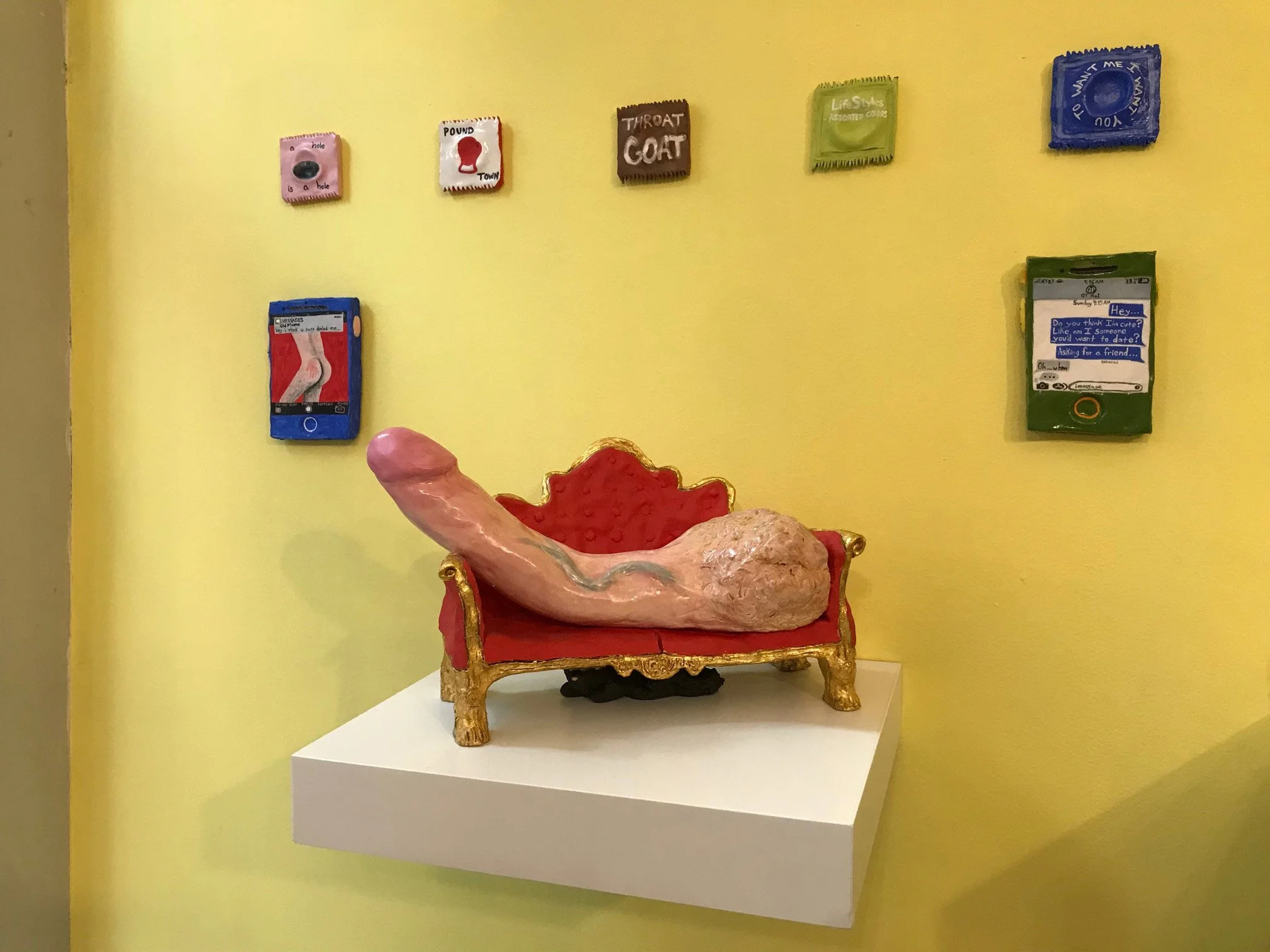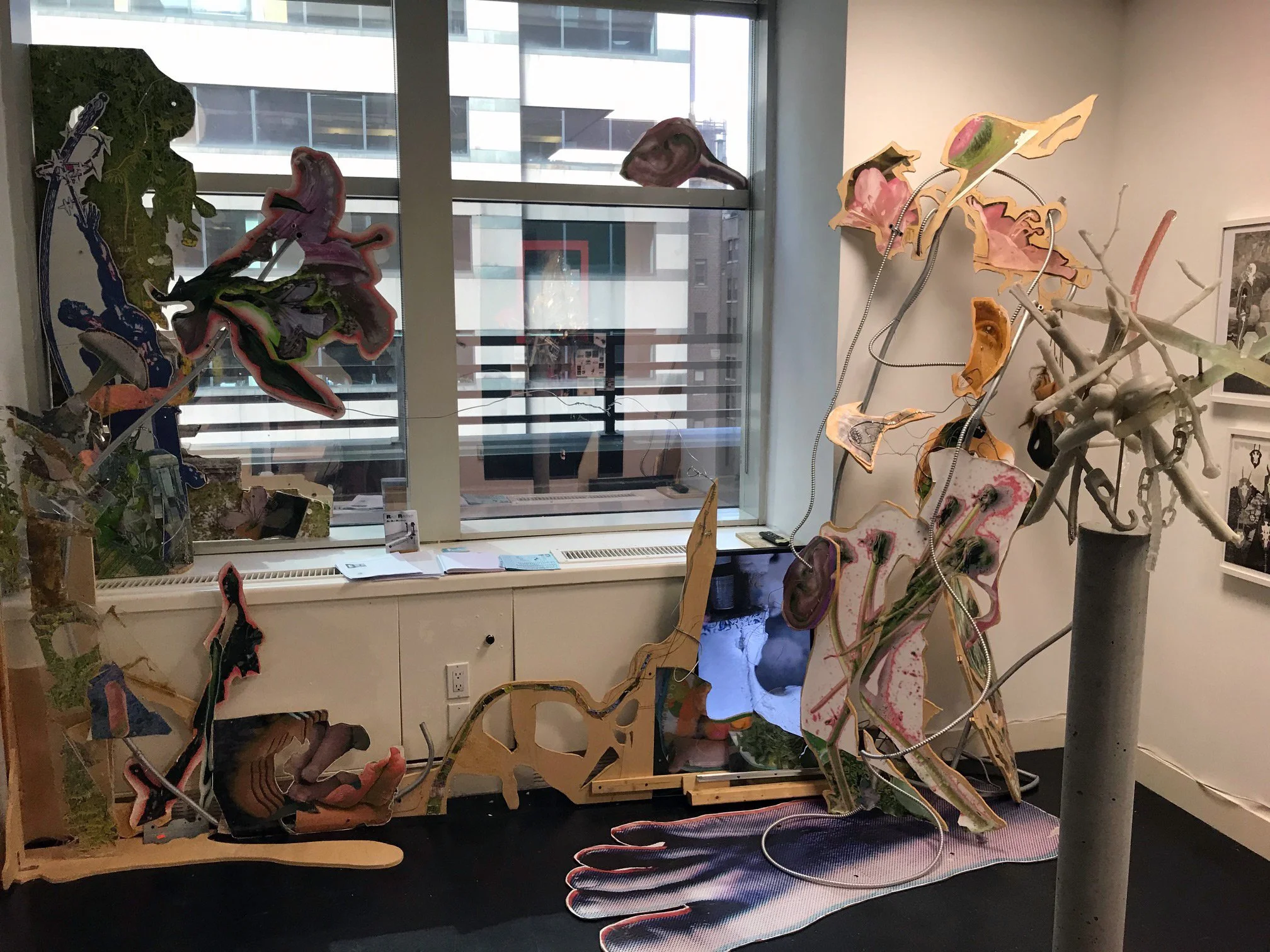Tradition and Transgression at SPRING/BREAK 2022
The 2022 edition of the SPRING/BREAK Art Show begs the question: can an art fair predicated on irreverence, spontaneity, and a do-it-yourself aesthetic maintain that level of innovation after ten years? The project started out a decade ago based on the premise that the exhibitors be provided a nontraditional, difficult, if not downright hostile environment that would instigate a creative and unexpected curatorial solution. For the last few years the exhibiting environment has remained static, and is more inconvenient in its layout of offices, desks, and cubicles, rather than exciting or challenging. SPRING/BREAK has, in effect, become just another art fair—but at least one cut from the cloth of the storied originary fairs held in hotel rooms and broom closets, not in convention centers and circus tents. As usual, as in all art fairs, it comes down to the artists and the curators to act as a dynamo for the fair’s appeal.
Installation view, Joannah Herr, Power Lunch, curated by Kat Ryals and Cara Sheffler.
Those exhibitors that did endeavor to create environments worked hard to carve out oases of momentary dissociation from the banal office space: Kat Ryals and Cara Sheffler created a warm Midcentury Modern wood-paneled office à la Mad Men in order to display the framed prints of Joannah Herr.
Installation view, Agnieszka Pilat, Data Rex Machina, curated by Filo Sofi Arts.
Across the floor, Agnieszka Pilat laid down textured blue rubber mats, painted the walls yellow and generated a temporary industrial playpen for her Boston Dynamics four-legged painting robot.
Installation view, Dasha Bazanova, That’s What You Get, curated by David Alexander.
Eve Sussman’s curatorial choice of ethereal luminous wallpaper framed Joel Beck and Eva Mantell’s brushy paintings, opening up the convoluted office space, while Dasha Bazanova’s installation That’s What You Get (curated by David Alexander) instead chose to close off her space with an isometric matrix of brown horizontal and vertical beams inhabited by Bazanova’s witty ceramic figures, perched like construction workers on the steel girders of an unfinished skyscraper.
Installation view, Colin J. Radcliffe, Homosocializing and the Eternal Fem: Colin J. Radcliffe and Maureen Dougherty, curated by Maureen Sullivan.
The theme of the fair was “Naked Lunch,” which with its sense of disconnected transgressive vignettes could apply to many exhibitions and seemed to be only a loose recommendation for this one. Of those who abided by the prompt, Colin J. Radcliffe’s collection of adorable erotic parti-colored ceramics (curated by Maureen Sullivan) featuring cartoonish figures with enormous phalli, and cutesy reproductions of iPhones with deeply cringy messages, seemed to embody the theme.
Installation of Christl Stringer’s paintings, curated by Caroline Heffron and Emily Royer and Christl Stringer
Christl Stringer’s lush oil paintings of jumbled and contorted female bodies, sometimes nude, other times armor-clad, intersecting with swings, games and household objects offered an enigmatic balance of horror and playfulness.
Installation view, Sophia Wallace, Feeling Your Oats, curated by Katrina Majkut.
At times the office interiors presented fertile ground for juicy contradictions; curated by Katrina Majkut, Sophia Wallace’s crisp neon clitoris wall pieces and her glossy freestanding anthropomorphic ceramic clitori, placed neatly on ascending bookshelves, seemed perfectly suited for a fancy, albeit perverse, corner office. John Orth’s forms (curated by Serra Victoria Bothwell Fels) approached from the opposite direction: their shell- and fungal-based writhing forms seemed to have emerged from the mud or compost of a dark forest, undulating objects of a secret cult.
Fay Ku, Jade Horse & Rider, 2022, graphite, ink, and watercolor on Bhutan paper, 23.5 x 32 in. Curated by Kris Racaniello and Jacob Rhodes.
Not all the works seemed to be focused on transgression, which provided a welcome diversity of theme: Fay Ku presented a series of precisely drawn works on paper (curated by Kris Racaniello and Jacob Rhodes) using the famous Han dynasty jade suits of armor as vehicles for a lively visual narrative.
Installation view, Brian Zeeger, Stochastic Garden, as with all those who are dying, curated by Laura Horne.
Laura Horne’s presentation of Brian Zegeer’s Stochastic Garden seemed to exemplify what SPRING/BREAK has always attempted to achieve, with a wonderful and mystifying whirlwind of colorful fragments, wires, tubes and plywood phantoms emerging casually from the black linoleum floor and climbing onto the window ledge.
Horacio Quiroz, Maneater, 2022, oil on canvas, 55 x 39.3 in. Curated by Maria Petrovskaya.
Similarly playing with random forms coalescing into a strongly unified assemblage, Horacio Quiroz’s stunning oil paintings of richly patterned blocks of marble were “piled” into witty humanoid figures, the painting Maneater (2022) attracted the eye like a magnet next to the door of Maria Petrovskaya’s curated room.
Installation view, works by Rebecca Marimutu, curated by Ashley Ouderkirk.
Providing a very original twist on tradition, Rebecca Marimutu (curated by Ashley Ouderkirk) jarringly deconstructs the portrait in a series of seemingly double-exposed/manipulated photographs where eyes become dislodged from the face, and even the notion of recognition and familiarity are questioned. While SPRING/BREAK could benefit from being shaken up once again, traces of the funhouse nature of the original decrepit school building downtown which gave the fair its name and began the project still remain, buoyed by the creativity of the participating artists and curators.










